Nestled in the southern reaches of Chilean Patagonia, Torres del Paine National Park may be famous for its windswept granite peaks and impossibly turquoise lakes, but in recent years it’s also become known as one of the best places in the world to encounter pumas (Puma concolor, also known as cougars or mountain lions). Thanks to two decades of concerted conservation efforts, some 60 individuals now inhabit the park and surrounding private areas, sustained by an ample population of guanacos.
In August 2019, photojournalist Lucas Bustamante spent a week amid the ice and snow of this iconic landscape, getting to know a hard-working female and her four six-month-old cubs.
To view the images as a slideshow, click on the arrows in the top right-hand corner of the photos below.

Like most cats, female pumas raise their young alone after mating in the spring. Litters usually number two (though can comprise up to six), so this was a healthy brood. The female was a very attentive parent, regularly grooming her youngsters and ever-watchful for danger. It pays for mother pumas to invest in their cubs – females typically average just one litter every two to three years.
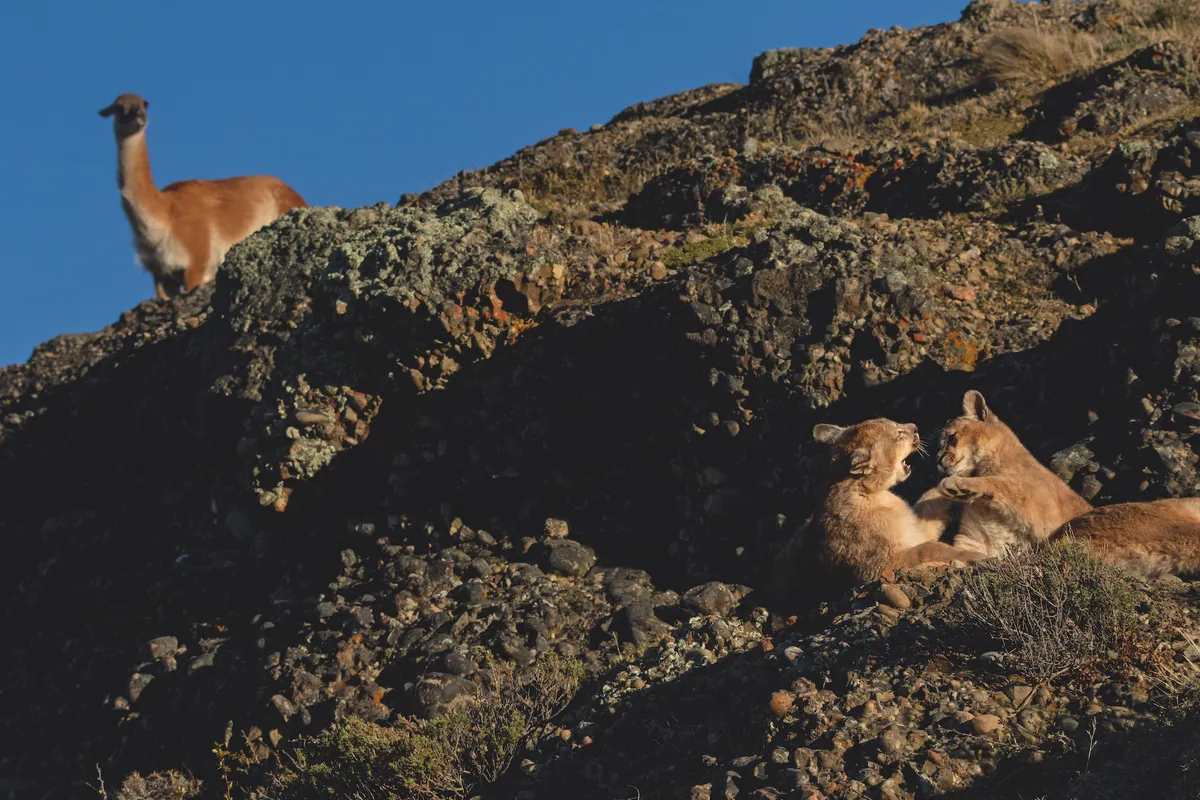
A guanaco’s curiosity almost gets the better of it, as it wanders nerve-janglingly close to the family hideout. When out hunting, the female often stashed her cubs in rocky nooks across her territory, to ensure shelter not only from the bitter Patagonian wind, but also from large males, who would kill the youngsters in a heartbeat to bring the female back into season.
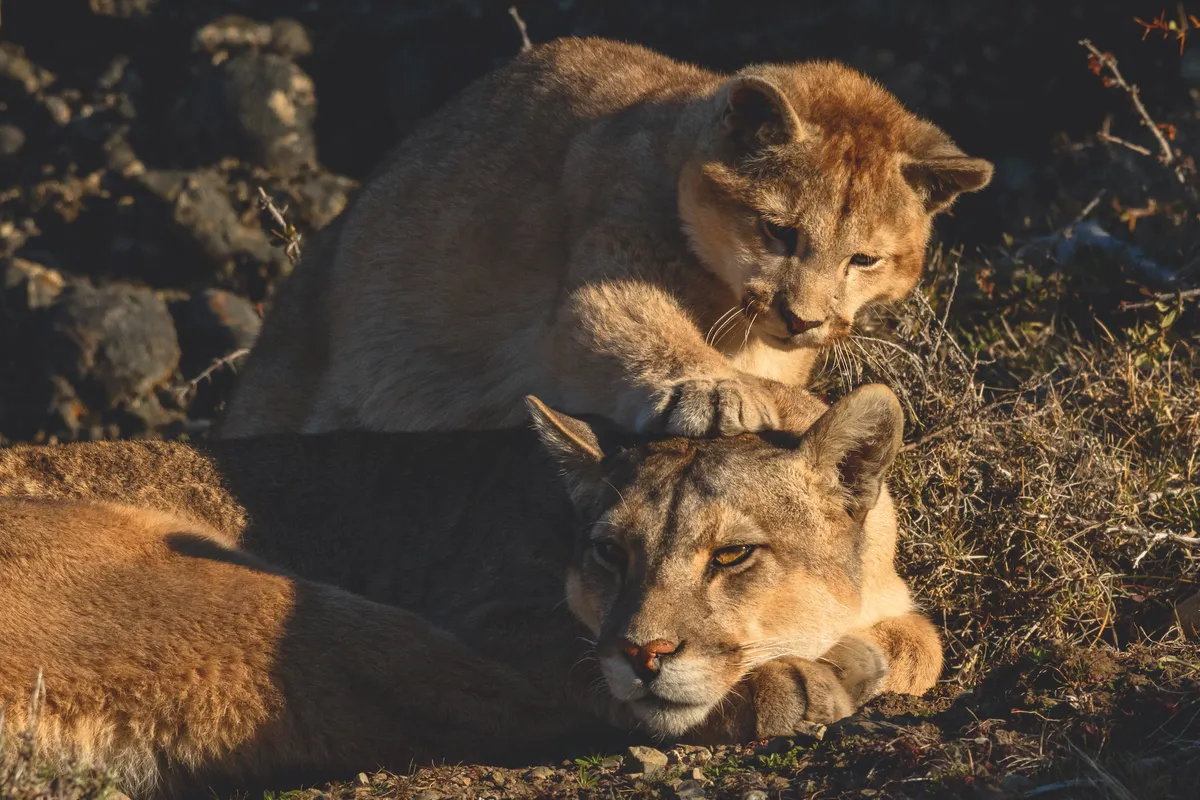
Bursting with energy, the cubs played virtually non-stop, constantly pestering their mother when she was trying to rest after a night’s hunting. “It was funny watching the female try to ‘escape’ her young so that she could get some sleep,” says Lucas. “Wherever she went, they would find her and try to rouse her to play. She had enormous tolerance for their antics.”
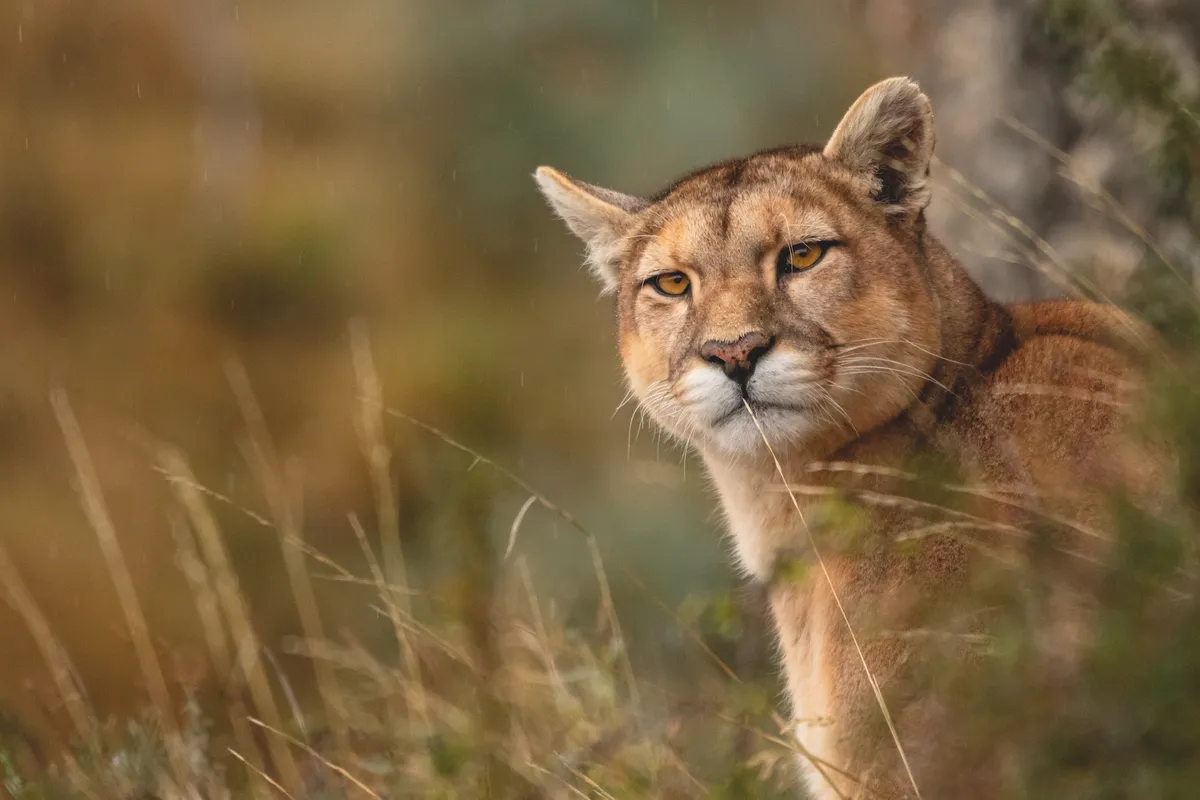
Found from Canada’s northern Yukon to the southern Andes, pumas have the largest range of any terrestrial mammal in the Americas. These are incredibly adaptable cats and survive in virtually every habitat, including all types of forest and lowland and mountainous desert. In South America, research has shown that puma density varies from 0.5 animals per 100km² to as many as 7 per 100km² in Torres del Paine.
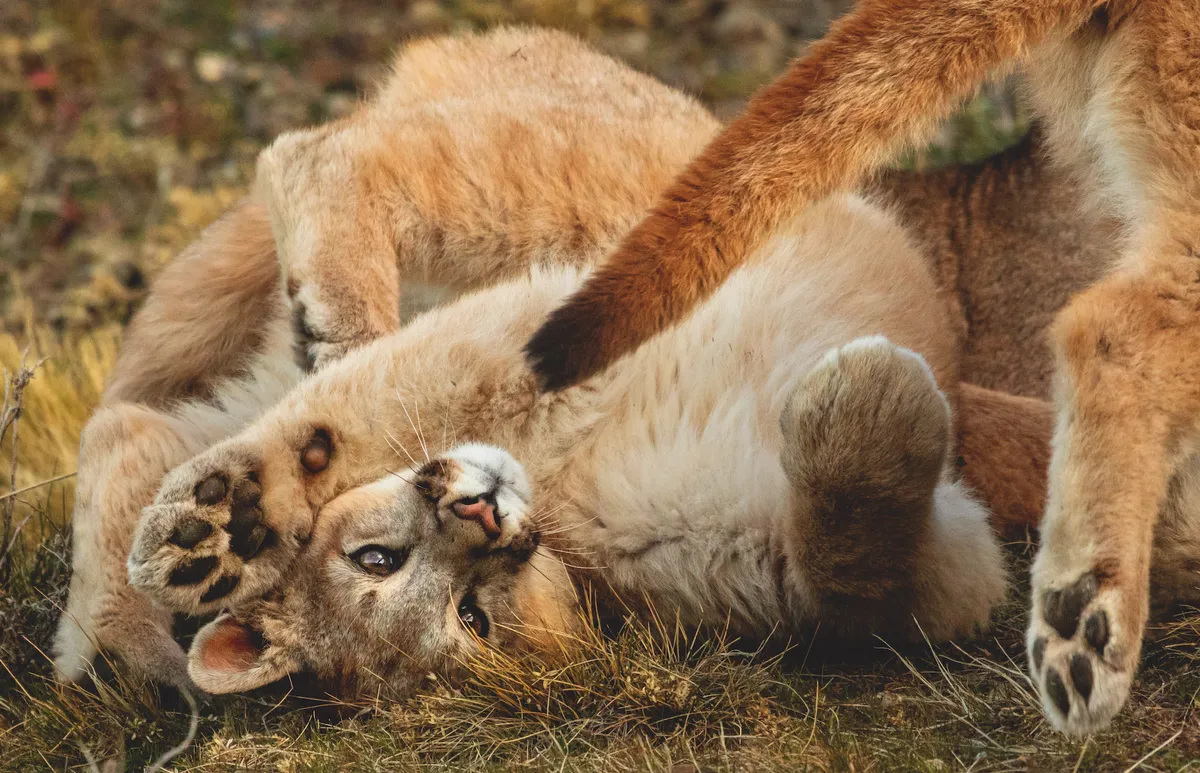
Playfighting is how cubs hone their hunting skills and develop the killer instincts that enable them to survive as adults. “The cubs were endearingly clumsy when playfighting,” recalls Lucas. “They were trying to stalk and pounce, but kept stumbling and tripping over each other.”
You may also like:
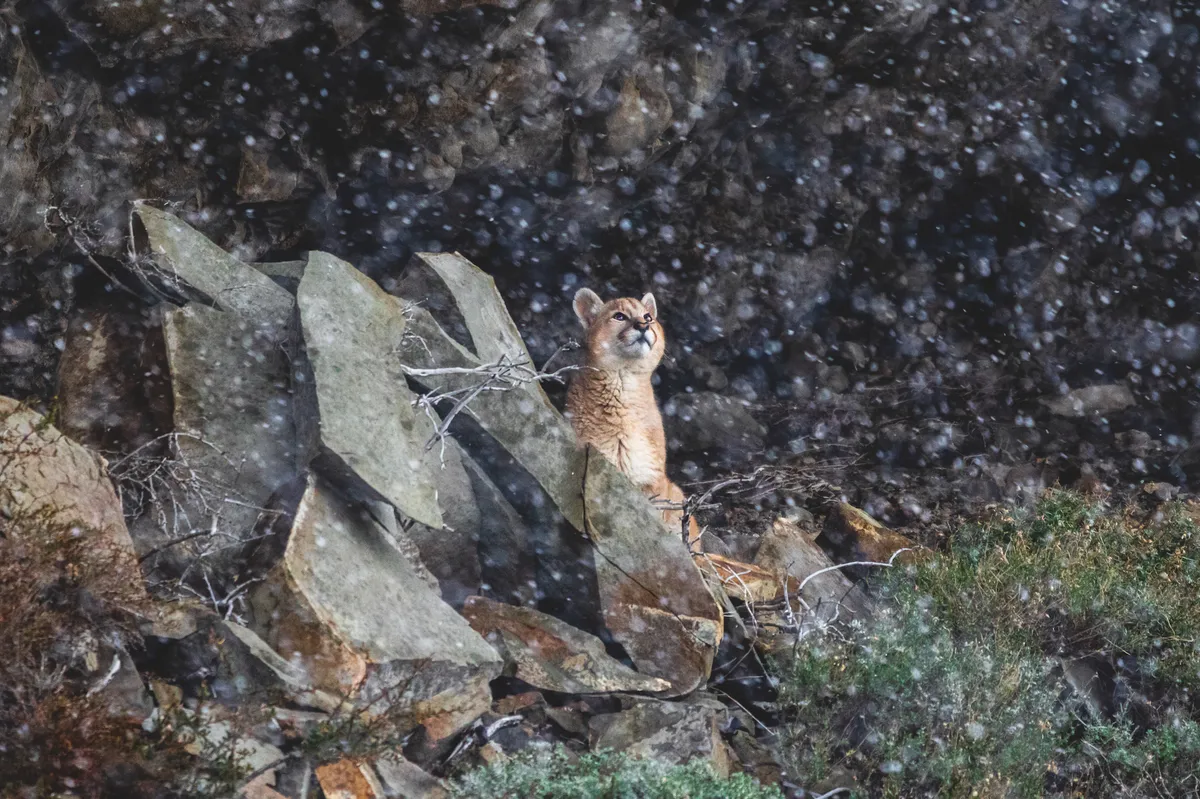
Winter sees Patagonia lashed by snow, rain and bitter winds. In the colder regions of the puma’s range, individuals are usually larger with thicker fur – those that enjoy the warmer climes of the tropics tend to be smaller and more lightweight. In Torres, the species’ guanaco prey is active year-round, providing the cats with a good supply of winter fuel.
They just have to catch one first.
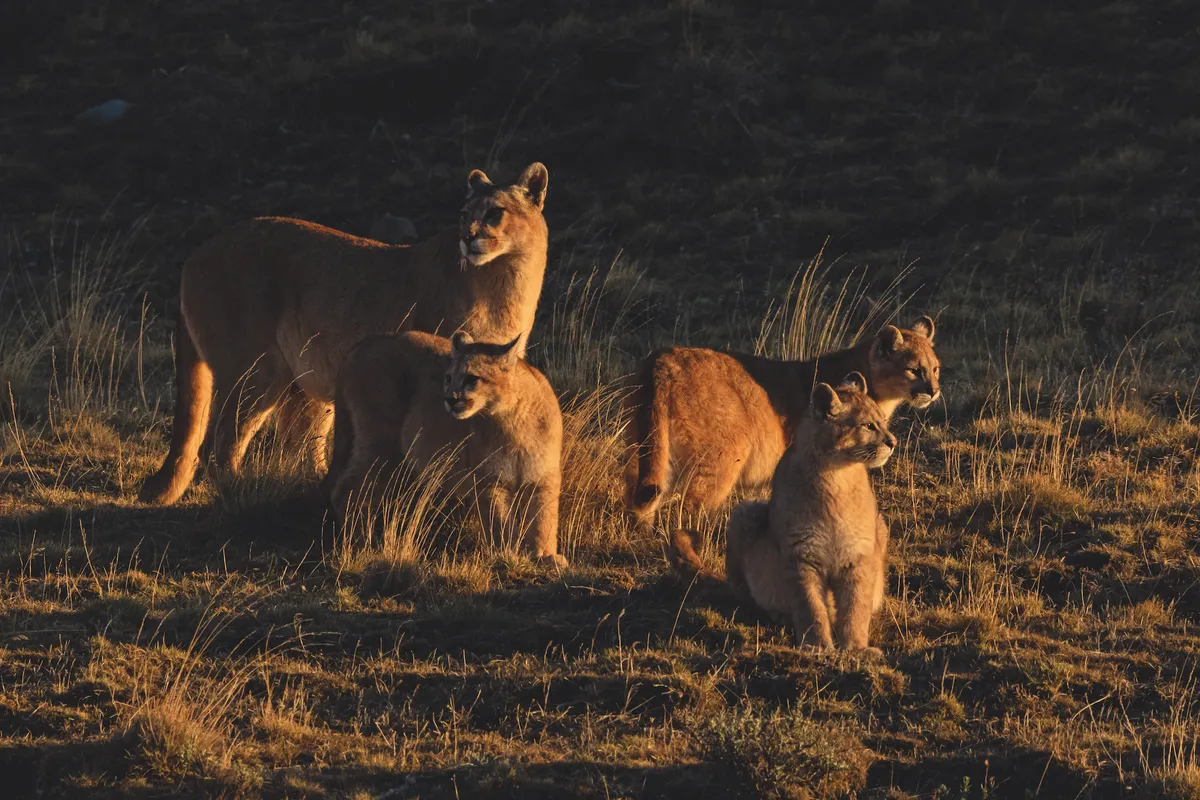
These cats are nocturnal and crepuscular by nature. Every two to three nights, the female would go out to hunt, returning at sunrise
to sleep. At six to eight months, cubs are generally starting to tackle small prey such as rodents and hares. By 12 months, they will be accompanying their mother on hunting trips. They’re independent at two years.

Camouflaged in the long grass, eyes fixed on the prize, the female stalks her quarry. Pumas are ambush predators, creeping up on their prey from afar. When the moment is right, they strike, using their powerful jaws to grab their target by the throat and attempt to suffocate it.
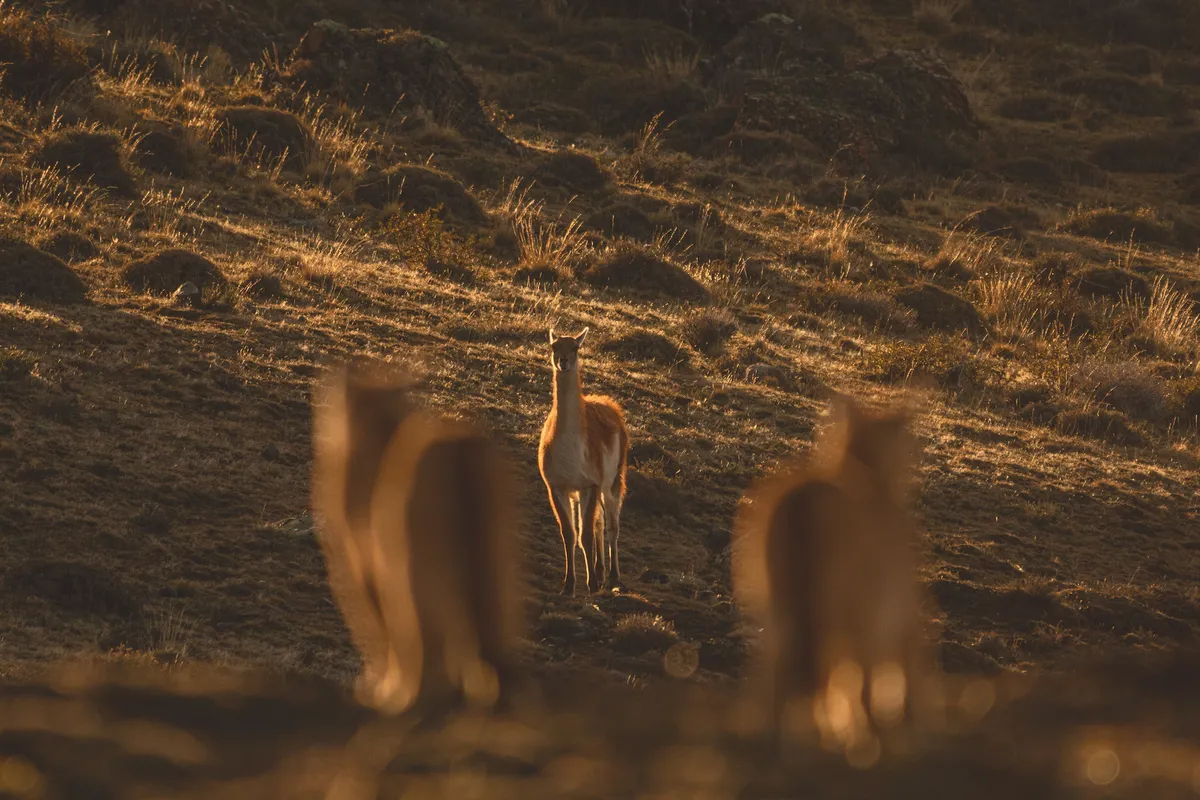
The cubs were very curious about the local guanacos. In time, they will learn that taking down these camelids is no easy feat. Guanacos are fast and powerful animals, and one well- aimed kick can easily knock out a puma’s teeth. On average, just one-in-five hunts ends with a kill.
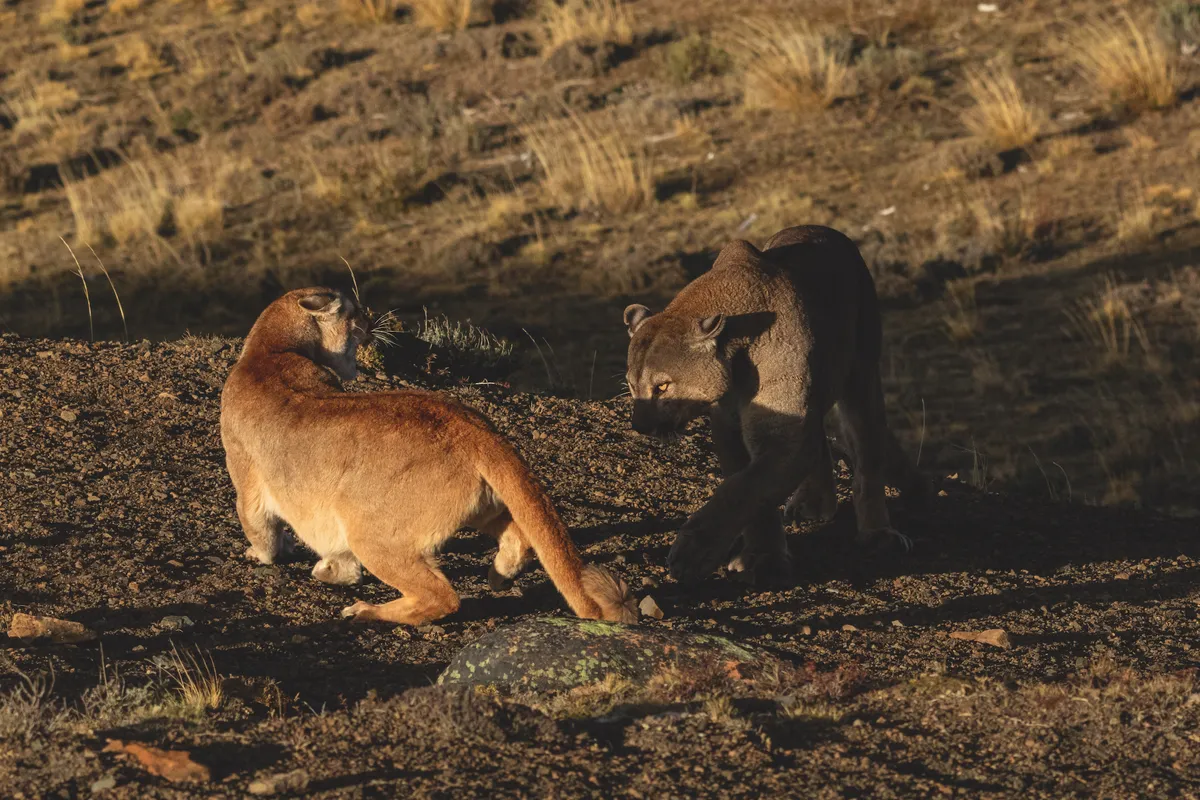
The family was feeding on a kill one morning when they were charged by a large male. His territory overlapped with theirs and he likely had his eye on the carcass. “The cubs fled, but the female stood her ground, roaring and displaying until he retreated,” says Lucas. “Conflict between adult pumas happens, but is rare – the consequences are simply too high for both.”

The puma may have a vast range, but hunting, depletion of prey and habitat loss has led to population crashes in the majority of its former strongholds.
Those in North America (known as cougars) have been particularly badly hit, mostly eradicated from eastern regions during the early 20th century.
Yet in Patagonia, the cats are prospering. Many ranchers and landowners are now making it a priority to protect the species, in order to drive eco-tourism initiatives, allowing individuals like this female to successfully raise their cubs.
“It’s time to follow their example and allow the puma to recover across its entire range,” says Lucas. “Long live this incredible cat, in the dramatic wildscapes of Patagonia.”
Lucas Bustamante is a biologist and wildlife conservation photojournalist from Ecuador.
He is director of photography at Tropical Herping, an institution he co-founded in 2009 to preserve reptiles and amphibians.
See more of his work at: tropicalherping.com; Instagram @luksth
